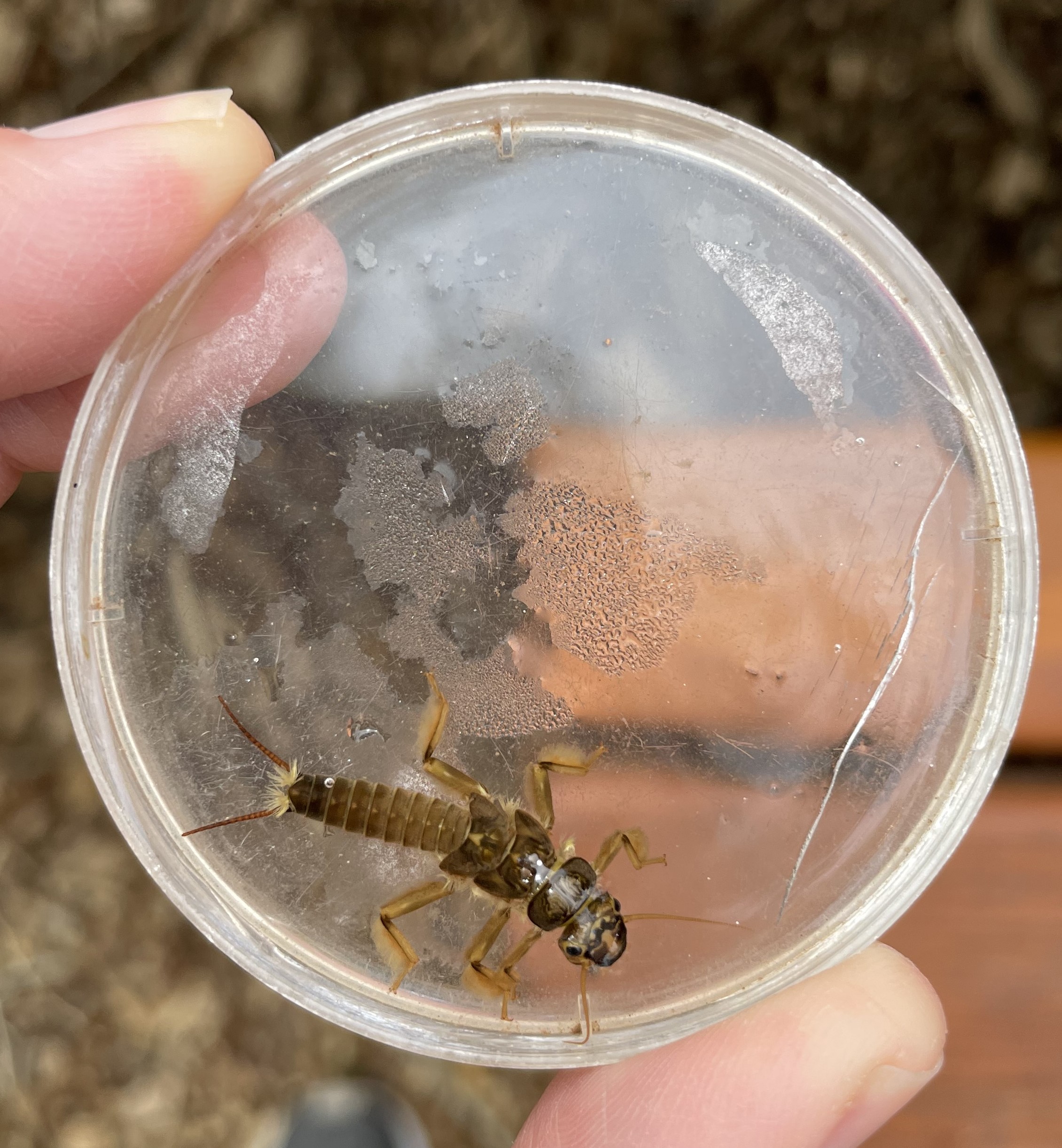There are three main categories for studying stream health: water chemistry, physical habitat, and biology. Within those categories many parameters can be measured, and the best overall picture of stream health comes from analyzing components of all three. One way to assess the biology of streams is by studying aquatic insects, worms, and crustaceans, known as macroinvertebrates (macros). These small organisms serve as valuable indicator species because they have long aquatic life stages where they are continually exposed to many components of stream health (such as temperature changes, dissolved oxygen levels and pollutants). The presence, absence, and diversity of macros provide important insights to stream health over time.
Macro samples are collected from the streambed, preserved, and sent to a laboratory where they are counted and identified. In many cases, samples contain hundreds or even a thousand specimens. This data reveals diversity and density of macro communities and a reflection of water quality.
RFC makes use of macro data in a variety of ways: they are periodically collected watershed wide as an overall indicator of stream health and utilized in targeted studies to examine changing health along a stream or in response to changing conditions. Often, RFC’s macro data is also submitted to the Colorado Water Quality Control Division for their statewide assessments of stream health.
Given the valuable data gained from examining macro communities, RFC will continue to utilize macro sampling as an important tool for studying long-term stream health.
Macroinvertebrates: Indicators of Water Quality
